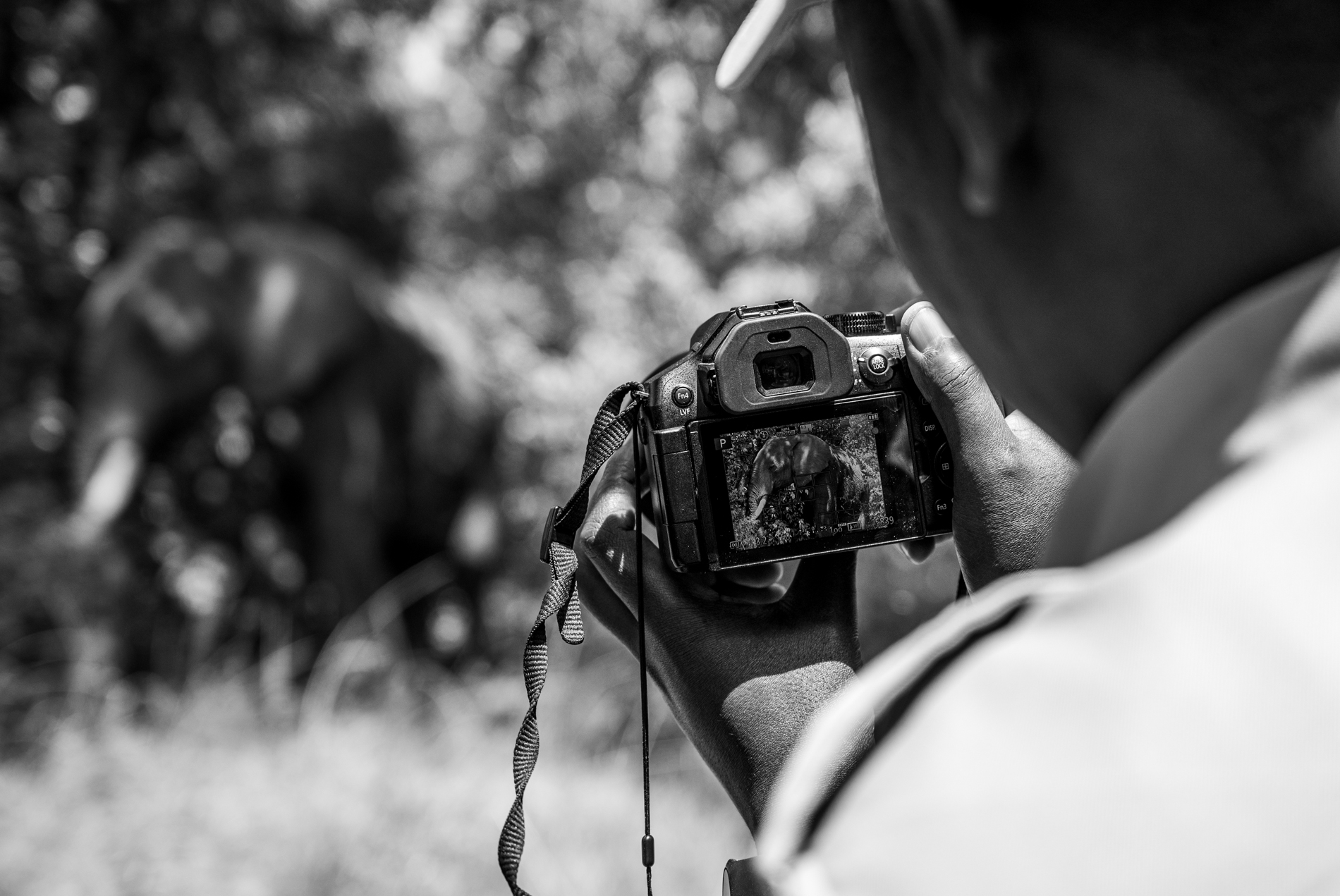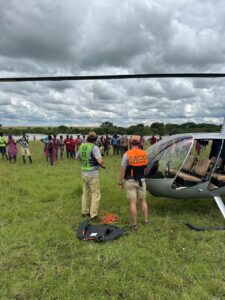Mara Elephant Project has developed bespoke conservation technology in house to solve some of the time consuming and costly challenges facing organizations making data-based conservation decisions. Like Ecoscope, ElephantBook is a custom software developed by MEP in collaboration with partners that automates the identification of elephants using information captured by MEP’s long-term monitoring (LTM) team.
Chags Photography
 Monitoring elephant population dynamics is essential in conservation efforts and although there have been many recent successes in the use of computer vision techniques for automated identification of other species, identification of elephants is extremely difficult and typically requires expertise as well as familiarity with elephants in the population.
Monitoring elephant population dynamics is essential in conservation efforts and although there have been many recent successes in the use of computer vision techniques for automated identification of other species, identification of elephants is extremely difficult and typically requires expertise as well as familiarity with elephants in the population.
That is why MEP and partners developed and deployed a web-based platform and database for human-in-the-loop re-identification of elephants combining manual attribute labeling done by the MEP LTM team and state-of-the-art computer vision algorithms, known as ElephantBook. Ecologists have recently attempted to create a general re-identification method that can be used by non-experts. The best known of these methods is System for Elephant Ear-Pattern Knowledge (SEEK) coding, developed by Elephants Alive, which uses manual attribute labels such as sex and the presence/absence of tusks to improve the accuracy and efficiency of re-identification. MEP in collaboration with the California Institute of Technology and Elephants Alive developed a semi-automated ensemble visual-recognition system using photographs taken by the LTM team along with manual SEEK attribute labeling. You can read more about ElephantBook in the manuscript co-authored by MEP Director of Research and Conservation Dr. Jake Wall, “ElephantBook: A Semi-Automated Human-in-the-Loop System for Elephant Re-Identification”.
 Here’s the process. The MEP LTM heads into the field for the day to gather extensive information on an individual elephant so that the same elephant and family herd can be identified correctly again to be monitored over time. They take high resolution images of all sexually mature elephants. Once back at headquarters, the photos are uploaded into ElephantBook to be catalogued.
Here’s the process. The MEP LTM heads into the field for the day to gather extensive information on an individual elephant so that the same elephant and family herd can be identified correctly again to be monitored over time. They take high resolution images of all sexually mature elephants. Once back at headquarters, the photos are uploaded into ElephantBook to be catalogued.
Chags Photography
 They start with the ears and take one ear at a time dividing it up into sections, like a clock, and noting any distinct characteristics and where they are located. For example, an elephant might have a tear at 7 or a discoloration at 4. They also note the tusks and any defining characteristics. While tusks seem to be a defining characteristic of an elephant, they can’t be solely relied upon because elephants can break their tusks. The detailed photographs are also used to note injuries that have healed or any other defining features that an elephant might have. For example, individual 2 “Flopsy”, an elephant identified by the team, is missing a tail and has a left ear that is unable to move and flops to his side.
They start with the ears and take one ear at a time dividing it up into sections, like a clock, and noting any distinct characteristics and where they are located. For example, an elephant might have a tear at 7 or a discoloration at 4. They also note the tusks and any defining characteristics. While tusks seem to be a defining characteristic of an elephant, they can’t be solely relied upon because elephants can break their tusks. The detailed photographs are also used to note injuries that have healed or any other defining features that an elephant might have. For example, individual 2 “Flopsy”, an elephant identified by the team, is missing a tail and has a left ear that is unable to move and flops to his side.
Once an elephant has been identified and catalogued in ElephantBook, the LTM team can then go out again and when they are able to successfully ID the same elephant twice, that elephant is given an official ID number, sometimes a name and adds to the growing catalogue of individuals identified. Identifying elephants previously was a more informal process and ElephantBook now allows a more approximate way to monitor the elephant population.
There are now over 1,500 identified elephant individuals in ElephantBook of the 2,600 elephants that call the Mara home. Using ElephantBook MEP strives to create a unique identification number for reach resident elephant in the Mara, which will enable us and our partners to track elephant demography to approximate elephant density and abundance and estimate their survival rates. The work that the LTM team is undertaking in identifying all of the elephants in the GME is extremely important to MEP’s mission. Their work over time can help alert Kenya Wildlife Service and MEP to a resurgence in poaching in the ecosystem, allow us to monitor the elephant population for any injuries related to conflict and determine the makeup of the elephant population in terms of sex, age and other characteristics. We will also be able to take monitoring information collected and apply that to ranger deployments.
 ElephantBook is a novel online software solution with the goal of making elephant re-identification usable by non-experts and scalable for use by multiple conservation NGOs. Thank you to Peter Kulits, Anka Bedetti, Michelle Henley and Sara Beery for their contributions to ElephantBook. MEP is grateful to our research partners Kenya Wildlife Service, the Wildlife Research and Training Institute, Narok Country Government and Maasai Mara Wildlife Conservancies Association for supporting this effort. If you’d like to learn more, collaborator Sara Beery from the California Institute of Technology was interviewed in a 2021 Mongabay article about her work on ElephantBook.
ElephantBook is a novel online software solution with the goal of making elephant re-identification usable by non-experts and scalable for use by multiple conservation NGOs. Thank you to Peter Kulits, Anka Bedetti, Michelle Henley and Sara Beery for their contributions to ElephantBook. MEP is grateful to our research partners Kenya Wildlife Service, the Wildlife Research and Training Institute, Narok Country Government and Maasai Mara Wildlife Conservancies Association for supporting this effort. If you’d like to learn more, collaborator Sara Beery from the California Institute of Technology was interviewed in a 2021 Mongabay article about her work on ElephantBook.
If you’d like to learn more about how you can support the development of this critical software solution, please email us.







